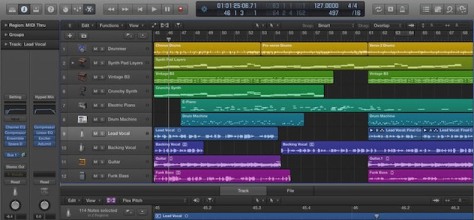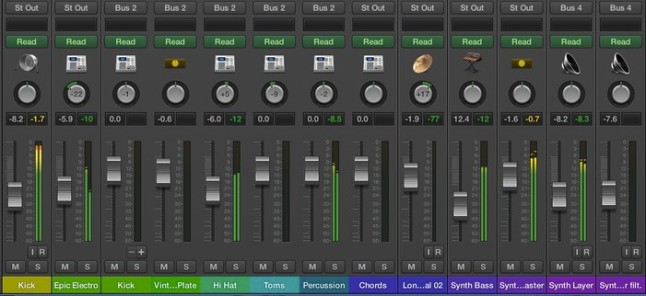We have a new/improved website, click to read this post there!
Audio mixing is a complex process where you need to fine tune the technique, aesthetics (perspective) and musicality to obtain a fulfilling result. This series is to help you adopt a habit while mixing a track of your own or commercially. Like every task in life, setting up the environment should be the starting point for a healthy workflow. A detailed approach on room acoustics needs a different series of its own so we will skip that (assuming you have a treated room and monitoring to mix) and start with organizing yourself and material.
COLORING & NAMING TRACKS
The most important aspect of organizing your environment is to develop a workflow that will transform into a ritual over the years. This will make your work productive and efficient which is the only way (for me) to have a desired mix at the end. This checklist will be a good starting point for you.
+ Name and order your tracks, get to know what is where.
+ Group elements related to each other (drums, instruments etc.) and send them to busses.
+ Use the same color for every group and put them together on your mixer.
+ Get your effects busses (paralel compression, reverb, delay, etc.) ready to go.
When you are done with this checklist you will be familiar with the materials. If you start doing this for every mix, with similar names and colors, you will soon develop a ritual that will boost your efficiency apparently.
Now we are set lets dive into balance.
BALANCING THE LEVELS
” Ultimately, setting the right levels are very much musical decisions.”
This quote from Unne Liljeblad tells us that balancing a mix is not really about processing & effects but the musicality that is hidden in each and every track. Again lets work with a checklist of things, this time keeping ourselves on the musical and perspective side of things. But before this lets talk a little on gain structure.
Gain structure is a starting vision for levelling in order to end up with acceptable levels at the end of a mix. Without further sophisticating things, it will be fair to say, if your individual tracks are in between -6db to -12db, you will probably end up between -3db to -6db which is pretty ok for mastering.
Now lets get to our checklist for balancing,
+ Work with low monitoring levels, there is not an optimum for this but your day to day listening level is a good starting point.
+ Spot a segment of the track where almost every element is introduced (most crowded part).
+ Start with just one group of sounds (for me this is drums), solo it and and get a balance inside that group.
+ Now according to your gain structure let this group alone (solo) peak at a certain level (around -7db generally works for me.
+ When a group is finished introduce another group and balance that with the previous one.
+ Over time it is very helpful to form a habit to this alignment (my workflow is drums – bass – instruments – vocals)
+ When the sound field gets crowded it becomes harder to decide on the balance. Lean on your guts and feelings which will improve over the years.
+ When you think the balance might be ok, lower your monitoring level to the hearing barrier, almost silent, and check if you can still hear every element. Make final adjustments while going back and forth with levels.
+ If the balance is ok, stick with it for now, never forget that it will change and it is not perfect but it is at least ready for further processing (eq, compression etc.).
+ Finally, check your levels, try not to be lower than -12db and more than -3db.
Yes the mix is still far away from being there but now we have a healthy workflow and balance to further develop on. Do not forget that the more you turn these into a habit, the better it will be.
Hope you enjoyed it until now.
The second part of the series will focus on advanced uses of EQ and Compression.
See you there!
Oz



